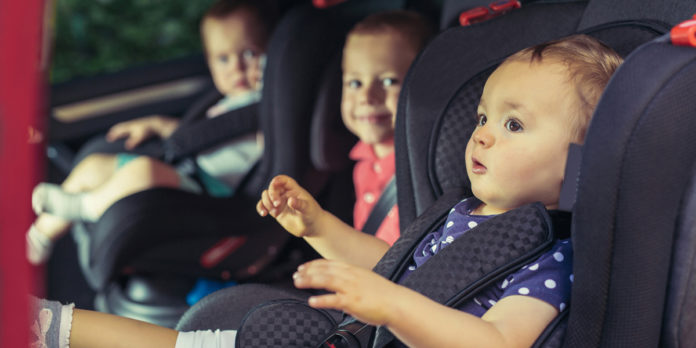Improving the design of child restraint instruction manuals could increase correct use of the restraints by up to 27 per cent, saving lives and preventing injuries, says research presented at the Safety 2018 World Conference in Bangkok, Thailand.
The research was presented by Associate Professor Julie Brown, from Neuroscience Research Australia (NeuRA) and a senior lecturer in the School of Medical Science at UNSW Sydney.
Associate Professor Brown revealed that nearly half of Australian parents using restraints are using them incorrectly, increasing the risk of serious injury to children by up to three times.
“Research undertaken at NeuRA identified a critical relationship between comprehension of instructional materials and errors in use,” Associate Professor Brown said.
In a survey of 400 Australian parents, 90 per cent reported that they had read the instructions supplied with the restraints, yet high rates of incorrect use continue.
“This suggested instructional materials in their current form may not be effective in communicating how to use restraints correctly, and that we may need to take a new approach to how instructional materials are regulated in product standards,” said Associate Professor Brown.
As part of the study, researchers at NeuRA looked at the range of instructional materials provided by manufacturers of restraints, citing these as a leading cause of errors in use.
Following their review, Associate Professor Brown and her team developed a new set of prototype instructional materials. The instructions differ from other instructions because they are designed with a user-driven approach and were tested and refined until at least 80 per cent of study participants achieved correct comprehension and proper use.
“Instead of a group of experts sitting around a table developing user guidelines, we asked parents to work with us to develop and drive new instructions, and to then road test them as part of our ongoing research to review and deliver correct comprehension and proper use of installation guidelines,” Associate Professor Brown said.
“We are trying to ensure information supplied with child restraints is comprehensible, to ultimately ensure they are installed correctly and do what they are designed to do.”
The new instructional materials developed in the study consisted of an A3-size instruction sheet, a set of four swing tags fixed to the restraint and an online video that demonstrates the overall instruction and usage process with extra video content that demonstrates specific key tasks. The videos are accessible via QR codes fixed to the A3 instruction sheet and the swing tags.
Using the new consumer-driven instructional materials, 27 per cent more people attained correct use, and comprehension was 42 per cent higher.
NeuRA CEO Professor Peter Schofield said directly involving consumers in the development of informative materials was the gold standard.
“Bringing users into the design process ensures comprehension and overall correct usability, and will assist in our goal to save children’s lives and prevent serious injury,” Professor Schofield said. Fifty per cent of transport injuries are sustained by child passengers in cars in developed countries. This study will reduce that number by ensuring restraints are installed and used correctly every time a child travels on road, he said.
“Our findings tell us that increasing comprehension of child restraint instructions is an effective measure to counter misuse, and that users should be involved in every step of the design and testing,” said Associate Professor Brown.
“This could be a cost-effective and far-reaching intervention that will keep kids safer on the road here in Australia and in many other countries around the world.”
Injury is the leading cause of death and hospitalisation in Australia of children aged older than one year. Associate Professor Brown and her team at NeuRA are now taking this study from the lab to the real world to work on improving these outcomes and making child restraints in cars more effective.
(Source: UNSW Sydney)










